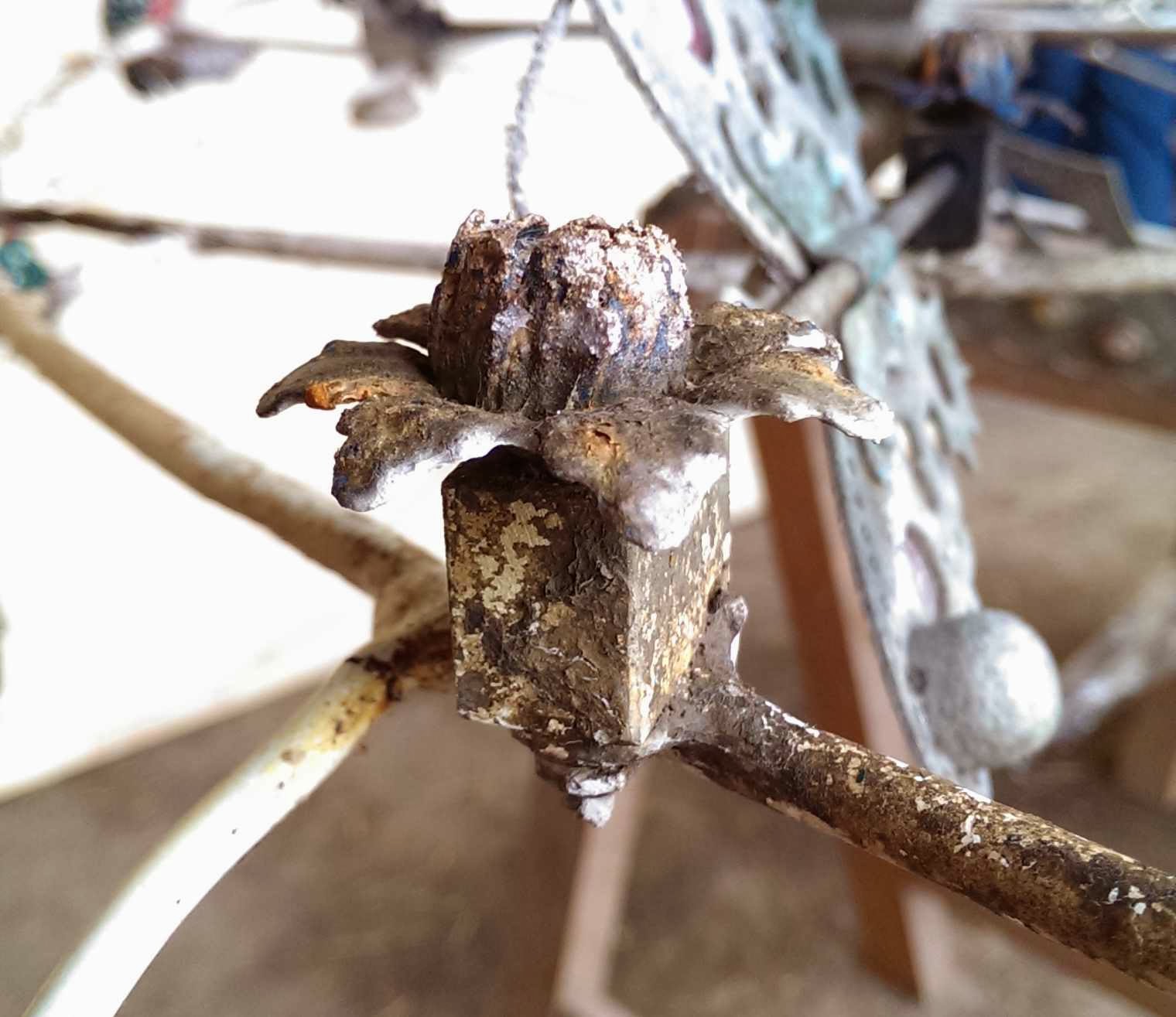To allow the iron structure of the petals to be cleaned of the layers of paint that have accumulated over the years they will need to be separated from their copper petals by removing the rivets. The hunt for replacement copper rivets resulted in a visit to Sapphire Products in Mount Street, Birmingham. They have given us some mushroom headed rivets that look to be the correct size to replace the ones fixing the petals to there supporting structure. They have also loaned the right tool for forming the rivets - all 72 of them.
A handy source of copper rivets.
Finding the right rivets.
Andy at Sutton Soda Blasters has finished removing the paint and fibreglass from the main tubular steel frame so we can now see where the original welds were that attached the missing cross-members. The steel has cleaned up nicely and is in remarkably good condition considering its siting in water for forty years. The next step will be to replace the missing parts. After that the steel will have a durable waterproof coating ready to face another forty years in contact with water.
The main frame stripped of paint.
The violin playing bird has been soda blasted and the violin bow has been straightened so this part is now back to its original shiny condition. There are five more of these to clean before they can go back onto their new bearings. The original bearings were in a poor state and close to failure but are being replaced and the support structure is being cleaned and painted. It may not be visible when the clock goes back together - but we know it's there!
Known to some as the 'Chicken with a Violin'
The first of the Water Wheel butterflies have also been soda blasted and revealed a number of unexpected copper parts that were completely obscured by the layers of salt crystals and grime. One of the decorative lattices from the central control box is ready for blasting. The layers of gold paint have obscured much of the detail so this should make a dramatic difference and reveal which metal was used to create them.
A butterfly ready to have its missing jewels replaced.
Tomorrow we will hopefully introduce a blacksmith to the Cobweb Water Wheel.
































